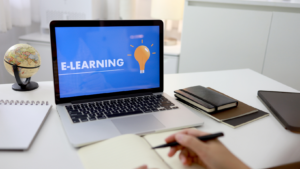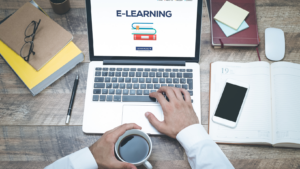In the digital age, education has taken a revolutionary leap forward with eLearning. As an experienced eLearning content developer, I’ve been at the forefront of this exciting shift. This article will delve into the fascinating world of eLearning content development, a field that’s reshaping how we learn, understand, and grow.
From creating engaging modules to understanding the psychology of online learners, eLearning content development is a dynamic and multi-faceted process. It’s not just about transferring information; it’s about crafting an immersive and interactive learning experience. So, let’s explore this journey together, peeling back the layers of eLearning content development and discovering its transformative potential.
Elearning Content Development

From firsthand experience, I understand that eLearning content development is not a straightforward task. It encompasses numerous steps aimed at producing high-quality, engaging, and educative digital materials.
As a blogger, my perspective is that the digitization of education has transformed how we perceive and partake in learning. With the advent of technology, classroom walls have expanded well beyond physical confines. Learners around the globe log in to virtual classrooms, successfully erasing geographical boundaries. Harnessing this capacity in a manner that maximizes the learning experience forms the crux of eLearning content development.
Citing authoritative sources, the World Economic Forum asserts that digital education enhances the learning process’s efficiency, convenience, and accessibility. Illustratively, imagine learners from all corners of the globe, each with their individual learning pace; they have access to the content anytime, anywhere, thus allowing for a more personal, flexible, and balanced learning approach.
Planning Your Elearning Course
A pivotal part of eLearning content development, planning the course incorporates both, setting educational objectives and choosing appropriate tools and platforms. Let’s delve into these aspects further.
Setting Educational Objectives
 Elearning courses hold potential value, provided they’re designed with clearly defined educational objectives in mind. These objectives form the cornerstone of the course, guiding its structure and content, as they decode what the learner aims to understand or achieve upon completion.
Elearning courses hold potential value, provided they’re designed with clearly defined educational objectives in mind. These objectives form the cornerstone of the course, guiding its structure and content, as they decode what the learner aims to understand or achieve upon completion.
For instance, an objective for a professional communication course might be “Discern and employ effective verbal and written communication strategies in a corporate setting.” This defines the target skillset and the precise context where it’ll be applied, providing a clear path for curating relevant content.
Choosing the Right Tools and Platforms
Selecting the right tools and platforms affects course delivery. Hence, it’s essential to choose wisely, considering both, the course requirements and learners’ technical proficiency. For example, a platform that supports video-based content would be optimal for a visual-heavy course like digital photo and video editing. In contrast, for a beginner’s coding course, a platform that provides an integrated code editor will keep it simple and efficient for new learners. It goes without saying, the chosen platform needs to be user-friendly, secure, and up-to-date with digital education trends, ensuring a smooth learning journey.
Designing Engaging Elearning Content

Now that we’ve planned, let’s dive into the design phase. Here’s where creativity meets technology to deliver high-quality learning experiences.
Interactive elements play a pivotal role in elearning content development. They increase engagement by involving learners in the process, making learning an active rather than a passive activity. Think quizzes, drag-and-drop exercises, simulations and so on.
For example, an elearning course on cybersecurity might include a simulated phishing attack. Learners have to identify which emails are phishing attempts, transforming a typical lesson into an interactive exercise. It’s not simply telling learners about phishing attacks; it’s showing them what to look for and letting them apply that knowledge in a controlled environment.
Utilizing Multimedia for Better Engagement
Equally important in capturing and holding learners’ attention is the use of multimedia. Multimedia elements such as images, video, and audio can significantly enhance the learning experience. They provide variety, appealing to different learning styles and making content more digestible and enjoyable.
Incorporate a balanced mix for optimum impact. For instance, an elearning module on first aid could use an instructional video to demonstrate procedures, images to highlight important points, audio for supplementary explanations, and text to provide detailed information. The key is to blend these diverse resources harmoniously, turning content into an engaging, multisensory experience.

